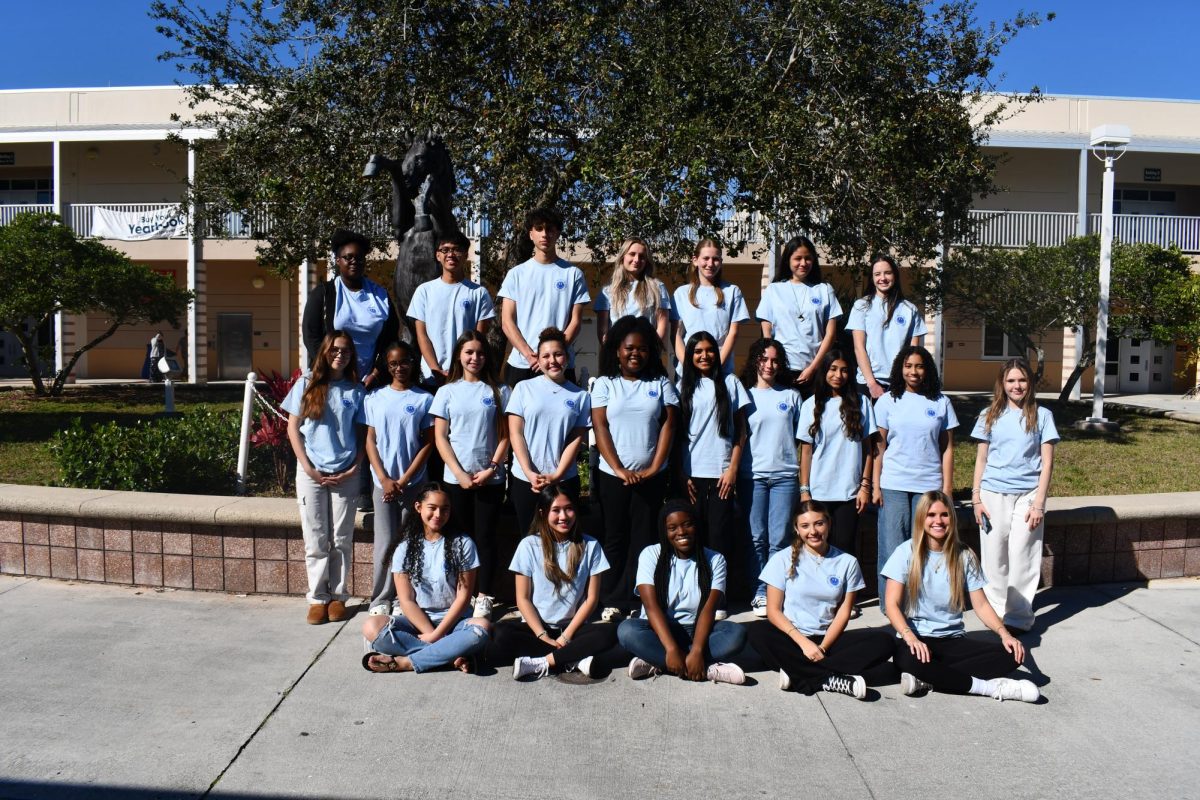Don’t get burnt, stay turnt
Michaela Bartley practices safe sun protocols at the beach.
November 30, 2022
When students visit the beach with their friends, they don’t usually arm themselves with sunscreen or rash guards because they focus on having fun. And since people can visit the beach pretty much all year round here, a day at the beach can be ruined with rashes, fevers, sunburn, and sea lice.
“I don’t burn,” senior Madison Fargo explained when asked why she doesn’t apply sun protection. “I get more tan, darker.” Fargo, who can often be found playing softball, does, however, wear a visor.
According to a study from the National Center for Biotechnology Information, a division of the National Institute of Health (NIH), “from 2007 to 2019, the average mean sunscreen usage for all students increased by 4 percent between every year studied.” The study further showed that teenage girls were 92 percent more likely to use sunscreen than teen boys each year. The lack of sunscreen usage may be connected to evidence that the majority of Florida adolescents are not aware of “peak hours.” This is the time between 10 a.m. to 4 p.m. when the sun’s UV rays are the strongest. In a 2014 study of Florida adolescents, 63 percent were not aware of the existence of peak hours. Couple this stat with a study that showed that 62 percent of teens “sometimes,” “rarely,” or “never” apply sunscreen.
Another idea that may be keeping young people away from sunscreen is the idea that tan skin looks “healthy.” In one study, 80 percent of those polled believed this. “To be more colorful instead of pale,” answered senior Emma Suggs when asked why she tans. “Pink doesn’t look good on me when I’m pale.”
For some, race and nationality play a role in their decision to wear or not wear sunscreen since skin tone can play a factor. According to the study “Sunscreen Use: Non-Hispanic Blacks Compared With Other Racial and/or Ethnic Groups,” only 14 percent of non-hispanic blacks don’t wear sunscreen believing that they don’t need it. The study also showed how the skin reacts to sun exposure based on race.
“I don’t wear sunblock,” said senior and football player Jake Houd. “My Venezuelan skin doesn’t let me get burnt.”
When the CDC’S Youth Risk Behavior Surveillance System performed their own research, their survey revealed that e there were about 2.175 white students, 2.173 Asian students, 1.864 islander students, 1.848 Indian students, 1.842 Latino students, and 1.486 black students using sunscreen. When students get older, sunscreen use would decrease but increase for women because of the fashion of tanning. The increase could also be explained by the fact that many makeup brands include sunscreen in their product.
Although teens have a variety of reasons as to why they should or shouldn’t wear sunscreen, according to the American Academy of Dermatology, everyone should wear sunblock.
“Sunscreen use can help prevent skin cancer by protecting you from the sun’s harmful ultraviolet (UV) rays,” noted a report from the AAD. “Anyone can get skin cancer, regardless of age, gender, or skin tone. In fact, it is estimated that one in five Americans will develop skin cancer in their lifetime. Sunscreen can also help prevent premature skin aging, such as wrinkles and age spots, caused by too much unprotected UV exposure.”
For more information or what to do if you get a sunburn, check out https://www.aad.org/media/stats-sunscreen and https://www.ncbi.nlm.nih.gov/pmc/articles/PMC8370854/




